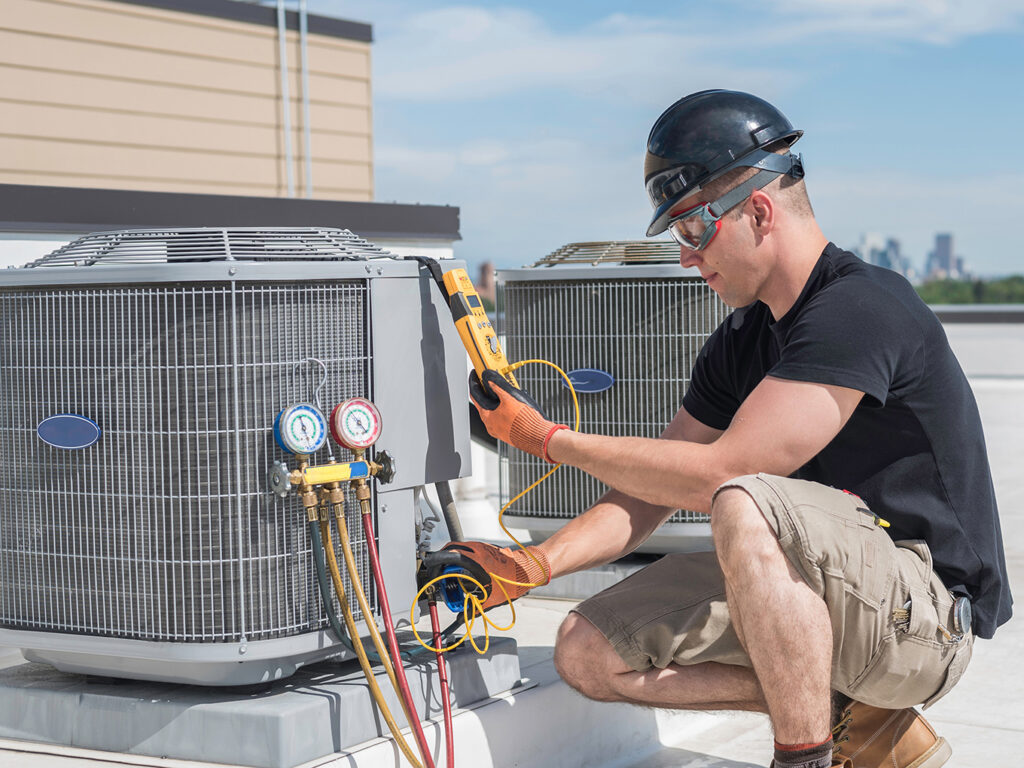As new commercial construction projects take shape, one of the crucial aspects that demand careful consideration is the design and installation of Heating, Ventilation, and Air Conditioning (HVAC) systems. A well-planned and efficient commercial HVAC system not only ensures optimal indoor comfort for occupants but also plays a significant role in energy efficiency, cost-effectiveness, and overall building performance. Here are the top considerations that developers, architects, and building owners should keep in mind when selecting and integrating HVAC systems into new commercial construction projects:
Determine Industry-Specific Requirements
When it comes to HVAC systems, industry-specific considerations play a crucial role in determining the design, installation, and maintenance requirements tailored to the unique needs of various sectors. For example, healthcare facilities prioritize air quality control and infection prevention, requiring specialized HVAC systems with high-level filtration and ventilation to maintain a sterile environment. Retail establishments focus on creating a comfortable shopping experience for customers, balancing temperature control with energy efficiency to enhance the overall retail environment.
Whatever your specific type of business is, there are likely requirements that are fairly unique and specialized to your industry. An experienced Montana commercial HVAC contractor like Garden City Plumbing & Heating is a great resource to help guide you in the process.
Assessing Building Load Requirements
Your building plans will determine the size unit you will need for your HVAC system. The first step in planning for HVAC needs is to accurately assess the building load requirements. This involves determining the heating and cooling loads, which are influenced by various factors such as the building’s size, orientation, occupancy levels, and the nature of the business operations. A load calculation, conducted by a professional Montana commercial HVAC contractor, will ensure that the system installed can adequately meet the demands of the space without being oversized or undersized.
Energy Efficiency and Sustainability
Having cost-efficient equipment is a requirement for commercial construction, not just to conserve profit but also to be an earth-conscious business. Why not kill two birds with one stone? Business owners should consider high-efficiency HVAC units that comply with or exceed the standards set by entities like ENERGY STAR or the American Society of Heating, Refrigerating, and Air-Conditioning Engineers (ASHRAE).
Moreover, integrating renewable energy sources, such as solar panels or geothermal systems, can further enhance energy efficiency. Incorporating advanced technologies like variable refrigerant flow (VRF) systems or energy recovery ventilators (ERVs) can optimize performance by adjusting cooling and heating outputs to real-time needs and reclaiming energy from exhaust air. A Montana commercial HVAC contractor will help you figure out which systems will best serve the needs of your facility.
Compliance with Regulations and Standards
Compliance with building codes, standards, and regulations is non-negotiable when designing and installing HVAC systems in new commercial construction projects. Working closely with HVAC professionals, engineers, and contractors who are well-versed in local codes and industry guidelines can help ensure that the HVAC system meets all regulatory requirements regarding safety, efficiency, air quality, and environmental impact. Adhering to these standards, such as the International Mechanical Code (IMC), the National Electrical Code (NEC), and state-specific building codes, not only ensures the protection of occupants and property but also minimizes the risk of costly fines or legal repercussions in the future.
Indoor Air Quality
Providing a healthy and comfortable indoor environment for occupants is essential for productivity, well-being, and overall satisfaction. Considerations such as air filtration, humidity control, proper ventilation rates, and zoning options should be factored into the HVAC system design to achieve optimal indoor air quality levels. Implementing advanced air purification technologies, such as UV germicidal lights or HEPA filters, can help reduce allergens, pathogens, and pollutants, creating a clean and safe indoor environment for occupants.
Long-Term Maintenance and Scalability
It is important to consider the future of your commercial facility, including both maintenance and future growth. Developing a preventive maintenance plan that includes routine inspections, cleaning, and timely repairs can help avoid unexpected breakdowns and costly emergency services.
Whether you hope to eventually expand this business or add other renters to the facility, setting yourself up for future growth will make it easier. Being able to scale up as HVAC needs change when the time comes requires setting up for that now. When it comes to HVAC, it may mean setting up ductwork so that extra pathways can be added easily.
Coordinating With Other Contractors
Using an HVAC contractor who can coordinate with contractors from other disciplines will ease stress and streamline the building process. Make sure you understand the difference between CAD and BIM and consult with Garden City Plumbing and HVAC, Montana’s most experienced commercial HVAC contractor, which has licensed technicians who are proficient with CAD and BIM! You will notice and appreciate the difference!
Make Sure To Have Reliable Guidance and Contractors
Whether you are still in the planning stages or are ready to break ground, be sure to call Garden City Plumbing and Heating to make sure your new commercial facility has the most effective HVAC system and warranty to begin your next business venture with your best foot forward! Call us at (406) 728-5550 or contact us online today!

